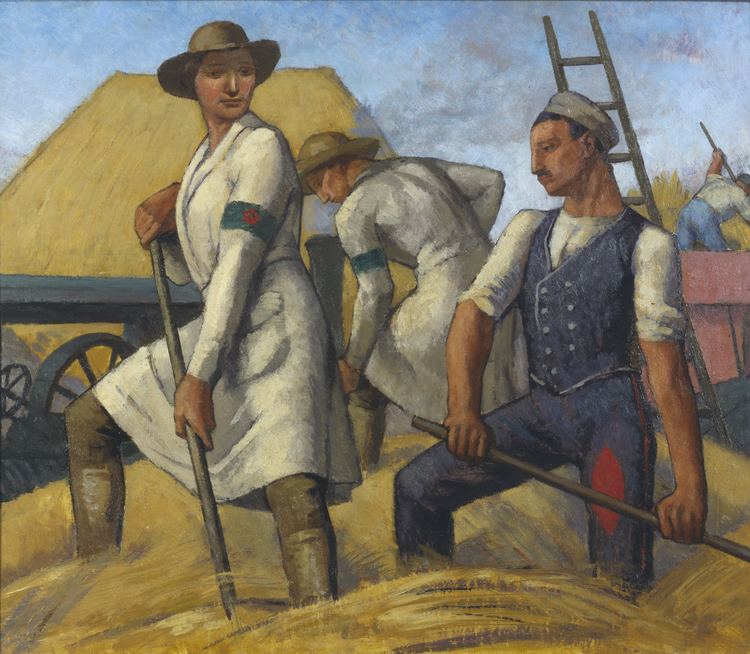Nationality British Known for Painting, drawing | Name Randolph Schwabe | |
 | ||
Died September 19, 1948, Helensburgh, United Kingdom Books Historic Costume: A Chronicle of Fashion in Western Europe, 1490-1790 Education Royal College of Art, Slade School of Fine Art, Academie Julian | ||
Randolph Schwabe, (9 May 1885 – 19 September 1948), was a draughtsmen, painter and etcher who was the Slade Professor of Fine Art at University College London from 1930 until his death. He served as a war artist in both World Wars, created designs for theatrical productions and illustrated a number of books.
Contents

Early life
Schwabe was born in Eccles, Greater Manchester, the youngest of two sons to Octavie Henriette Ermen and Lawrence Schwabe, a cotton merchant whose father had emigrated from Germany in 1820. The family moved several times before settling in Hemel Hempstead, Hertfordshire, where Lawrence Schwabe opened a printing and stationary business. Randolph was educated at a private school in Hemel Hempstead and from an early age showed a talent for drawing. In 1899, aged fourteen, he was enrolled at the Royal College of Art but was unhappy there and within a few months had transferred to the Slade School of Fine Art. In 1904 Schwabe won a Slade Scholarship and in 1905 won the college Summer Competition Prize. In 1906, a Slade scholarship allowed him to study at the Academie Julien in Paris before travelling to Italy in 1908. Working in Rome and Florence he gained a deep knowledge of Italian art and architecture. Work by Schwabe was shown at the New English Art Club in 1909 and he became a member in 1917, having become a member of the London Group in 1915. In April 1913 Schwabe married Gwendolen Jones and they were to have one daughter.
Career
During the First World War, Schwabe served as an official war artist, as poor health had prevented him enlisting, and he mainly produced paintings and drawings of the work done by the Women's Land Army. After the war he began to teach at both the Camberwell School of Art and the Westminster School of Art. In 1930 he succeeded Henry Tonks as Slade Professor of Fine Art at University College and as Principal of the Slade School of Fine Art. His work was widely exhibited and he also created designs for theatrical productions and illustrated a number of books, including Historic Costume (1925) and A Short History of Costume and Armour (1931), both with F. M. Kelly. Other books illustrated by Schwabe included Crossings (1921) by Walter de la Mare, The Tinkers of Elstow (1946) by H E Bates and several books by the dance historian Cyril W. Beaumont.
In 1941 Schwabe joined the committee of the War Artists' Advisory Committee and was also given a short commission to produce pieces for their collection. This included a commission to record the bomb damage to Coventry Cathedral in November 1940. A columnist for the Chicago Daily Tribune nominated Schwabe for a Pulitzer Prize in 1943 for his cover illustration to The Old Churches of London by Gerald Cobb but had to write to the book's publishers to explain that he had been humorous as no such prize existed.,
Although he remained Principal of the Slade, he moved to Helensburgh in Dunbartonshire for health reasons and he died there in September 1948.
Legacy
Works by Schwabe are held in several major collections; the Imperial War Museum has examples of his war-time commissions from both the First and Second World Wars. The Arts Council toured a major retrospective of his work in 1951. Schwabe's ashes are interned in the churchyard of St John-at-Hampstead in Hampstead, over which stands a small statue of an angel by the sculptor Alan Durst. The angel wears a sash with the legend, Randolph Schwabe in whose life we have seen excellence in beauty.
